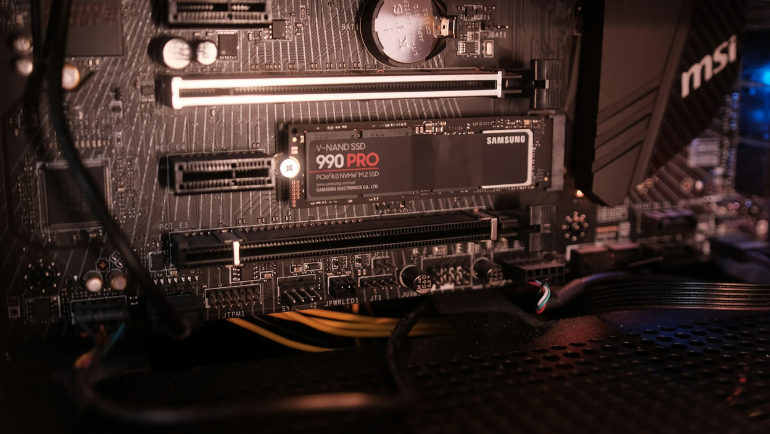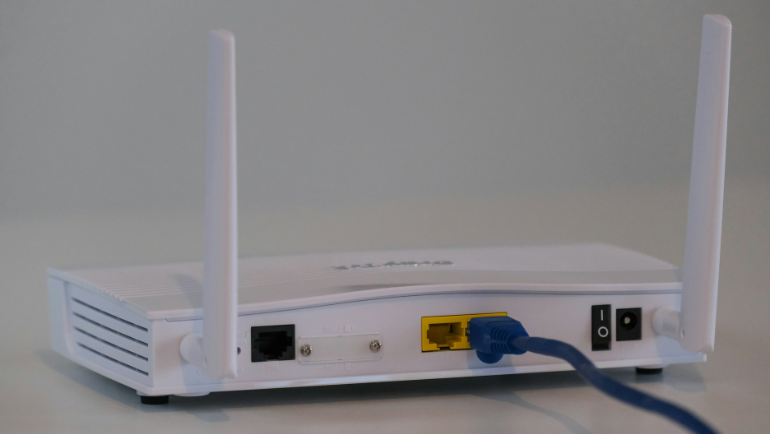
All computer systems require fast accessing speed to boot their applications and process data. Without Random Access Memory (RAM), a laptop or desktop can’t function. RAMs are also the best way to scale the system’s overall performance. Today, various types of RAM modules are being used, making it crucial to avoid mistakes due to complicated jargon. This blog highlights the differences between laptop and desktop memory, their size, performance, and more.
Difference Between Laptop RAM and Desktop RAM
Memories play a fundamental role in streamlining enterprises’ operations. Many other differences between laptop and desktop memory are mentioned in the following section.
Laptop vs. Desktop RAM: Form Factor
Desktop uses a RAM module known as a Dual In-Line Memory Module (DIMM) while laptops use a Small Outline Dual In-Line Memory Module (SO-DIMM). DIMM modules are greater in size (4 inches) perfect for PCs and servers. In contrast, SO-DIMM is smaller in size (3 inches) and mostly used in laptops and other portable devices. The difference in size is due to a smaller pin size, DIMM has a total of 240 pins, while SO-DIMM has 204 pins.
Laptop vs. Desktop RAM: Interface Type

The interface connects memory RAM to the motherboard. desktop and Laptop RAM sticks both use the Double Data Rate (DDR) interface. The DDR comes in many generations, the most common of them are DDR3, DDR4, and DDR5 being the latest. Each generation offers greater and faster speed than the previous generations. Therefore, before selecting a desktop or laptop RAM always consider the interface generation to align with your performance requirements.
Laptop vs. Desktop RAM: Performance
Desktop RAMs are larger and usually installed inside PCs and Servers, allowing better thermal management due to larger space. It will enable more air inside the system, dissipating heat efficiently. Desktop RAMs are more inclined towards more resource-intensive performance. In contrast, laptop RAMs are optimized for power efficiency and more adapted to running resource-intensive operations. This is due to having less space inside laptops, creating less efficient thermal management than desktop computers. Therefore, most laptop users use cooling fans to reduce thermal trolling and increase laptop RAM efficiency.
Laptop vs. Desktop RAM: Speed
There is no significant difference between laptop and desktop RAM speeds. Both RAMs are available in a similar generation such as DDR3, DDR4, and DDR5. They offer diverse speeds and performance in different read or write-intensive workloads. It is important to note that Laptop RAMs prioritize power efficiency over speed. Therefore, in practical applications desktop RAM may offer better performance than Laptop RAMs.
Laptop vs. Desktop RAM: Compatibility
All motherboards, whether laptops or desktops, support only one RAM standard, making it impossible to interchange between DDR3 and DDR4 RAMs. Even if the motherboard is compatible, the CPU or GPU may not accommodate the newer interface. This makes it crucial to understand all compatibility factors before replacing or changing laptop or desktop RAM.
Laptop vs. Desktop RAM: Capacity

The laptop RAM capacity ranges from 2 GB to 64 GB, while desktop memory is available between 4 GB to 32 GB. The difference in the capacity is due to the larger RAM form factor in Desktop RAM increasing DRAM chip space.
Laptop RAM vs. Desktop RAM: Error Correction Code (ECC)
ECC reduces the probability of error during data transfer, saving useful processing power in computer memory. RAMs in laptop and desktop systems have ECC which detects single or multi-bit errors during data processing. However, many non-ECC desktop and laptop RAMs are also available on the market. Therefore, always look at the manufacturer’s websites to check RAM specifications before purchasing.
Laptop RAM vs. Desktop RAM: Thermal Management
Thermal management in desktops is efficient due to good airflow and space for air and liquid cooling equipment. On the other hand, desktop RAM has more room to dissipate heat, allowing better thermal management. Enterprises that overclock desktop RAM may require some additional air or liquid cooling solution to avoid overheating.
Laptop RAM vs. Desktop RAM: Scalability and Upgradability

Both Laptop and desktop memory are scalable as RAMs are available in a variety of capacities and generations. The major problem that arises during upgradation is compatibility as either the motherboard, CPU or GPU might be incompatible with the latest RAM standard.
Laptop RAM vs. Desktop RAM: Price
The price of laptop RAM ranges from $18 to $499, while desktop RAM is between $20 to $999. Both laptop RAM and desktop RAM prices may vary depending on kits, brand, model interface, generation, and more. Computing Worlds offers the best new, used, and refurbished laptop and desktop memory units for sale. Popular Laptop RAMs
Popular Desktop RAMs
You can request a free bulk quote for the required number of parts.
Laptop RAM vs. Desktop RAM: Uses
All applications such as Operating Systems (OS) require RAMs for operation. Let’s look into some important uses of Laptop and Desktop RAMs.
- General Computing: Both laptops and desktops RAMs are used in general operations such as running OS, BIOS, or MS Word.
- Video Editing: Desktop RAMs are more suitable for video editing than Laptop RAM due to better thermal management. Enterprises opt for high-end desktop PCs for video editing tasks.
- Data Processing: RAM plays a fundamental role in processing data. Both RAMs process data, but mostly desktop RAMs are preferred for more big data processing.
Desktop vs. Laptop Memories: Pros and Cons

The following section will highlight some major advantages and disadvantages of laptop and desktop RAM sticks.
| Pro | Cons | |
|
Laptop RAM |
Convenience | Capacity Limits |
|
Power Efficiency |
Lower Performance | |
|
Portability |
Upgrading Constraints | |
| Desktop RAM | Higher Performance |
Lower Power Efficiency |
| More Capacity than LaptopRAM |
More bulky and larger |
|
| Allow External Cooling Options |
Upgrading Constraints |
Frequently Ask Questions:
Can I Underclocked Laptop and Desktop RAM?
Yes, you can underclock laptop and desktop RAMs.
Which is the Best Laptop RAM or Desktop RAM?
Both RAMs are crucial for their respective systems. However, desktop RAMs are more adaptable in resource-intensive environments.
Considering enterprise requirements and needs is crucial to selecting the best laptop or desktop RAMs. Both RAMs are important in their respective system, but knowing their difference helps you sort out compatibility problems. Enterprises also opt for RAMs with DDR4 and DDR5 standards for performance boost. RAMs and SSDs are the primary storage devices using DRAM and NAND memory chips for transferring data respectively. Understanding the relationship between them will help make the right decision. This marks the end of desktop vs. laptop memories.
Stay connected with the Computing Worlds blog for more information about memories.






